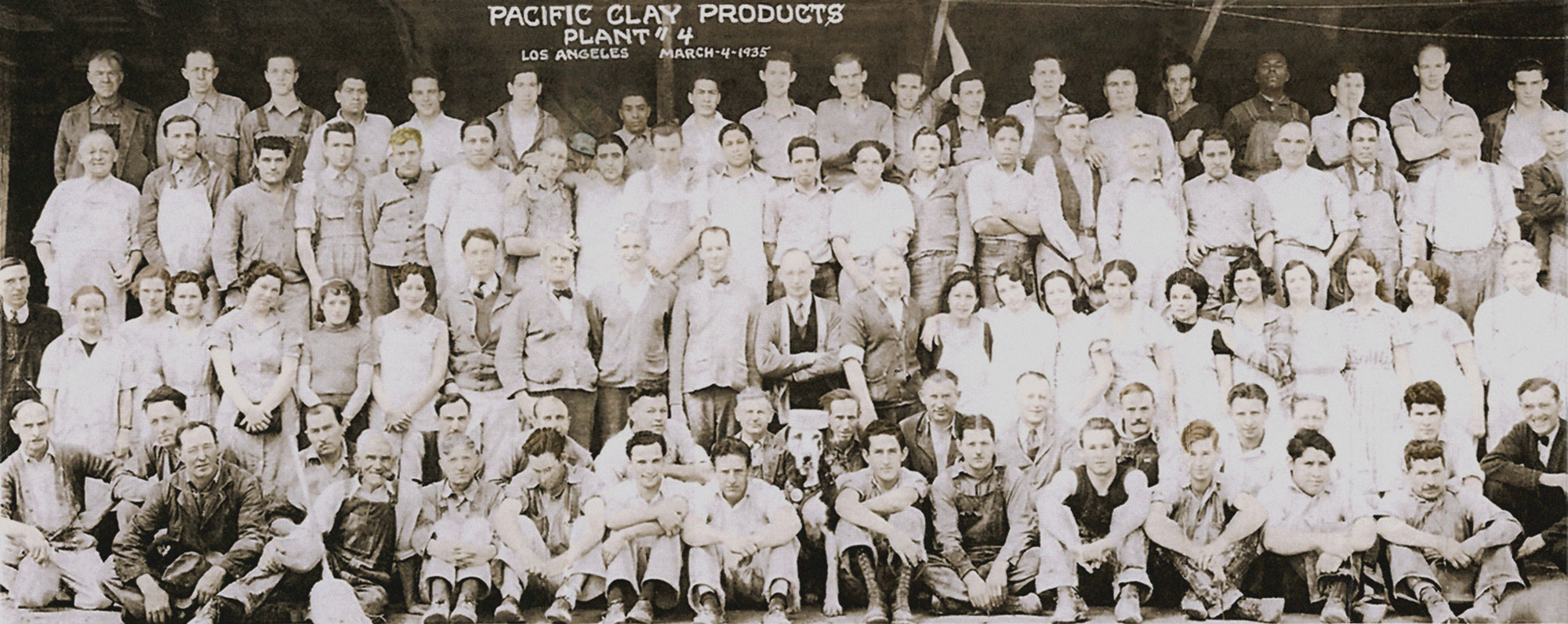Pacific Pottery Employee Photo 1935

California pottery historian Jack Chipment sent me a photo from Pacific Clay Products’ company photo from plant #4 – the Lincoln Heights (east Los Angeles) facility where Hostessware and other art and garden pottery was produced. I took the image, fixed some of the ravages of time (creases and folds), and lightly colorized the people to give them a little life.
Something that collectors tend to forget – especially as we romanticize these pottery companies – is that even the “big” companies didn’t employ a lot of people. I discovered this when doing some rigorous searches through the Los Angeles Times newspaper archives from the period – I expected to find tons of articles about the vibrant Southern California pottery industry, but actually turned up very little. Almost all of the companies (Pacific excepted) were privately held, and employed on average less than 200 people. So while the area was a hotbed for pottery production, the total number of workers employed relative to the overall population was pretty low. For comparison, industry giant Homer Laughlin employed roughly 800-1000 people in their good years – which speaks to why Fiesta is easy to find and other potteries’ lines not as much.
The Pacific photo has around 100 employees. Also of note, compared to other pottery company employee photographs from the period, it’s nice to see some workforce diversity in this photo: There are 15 women, 2 African Americans and several Latino employees. Even the annual reports from the period don’t provide any detail on the volume of Pacific Pottery produced during the 1930s, but given the relative lack of available pottery today, their production numbers were low in comparison to their local competitors: Bauer, Vernon Kilns, and Gladding-McBean in particular (Metlox didn’t really ramp up production until the late 1930s). Again, it’s important to keep in mind that Pacific’s primary business during this period was still commercial pipe and tile. Bauer, Vernon and Metlox were all dedicated to consumer production.





